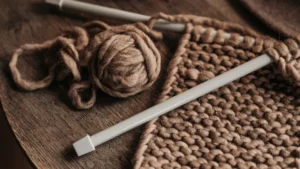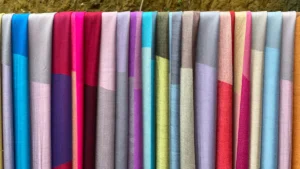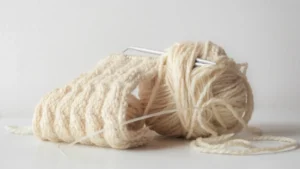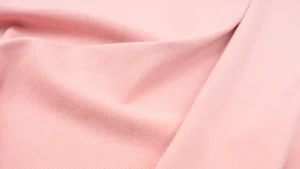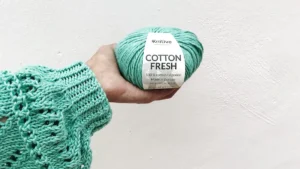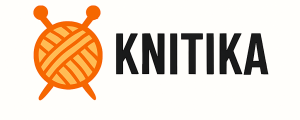
Demand for knit polo shirts keeps going up. Men still have 52% of the market. Women are buying more because of athleisure and sports. These shirts are comfortable, stylish, and useful. People like to wear them at work or every day. Stores see that knit polo shirts made from soft fabrics are popular. Customers want shirts that look nice and feel good all day. The mix of classic business style and new comfort makes them popular. Both men and women like these shirts.
Key Takeaways
Knit polo shirts are more comfortable and stretchy than regular polos. They are also stronger. This makes them a good choice for work, sports, and everyday wear.
Picking good fabrics like cotton piqué, polyester blends, or eco-friendly materials is important. These fabrics make polos feel nice and last longer. They also attract shoppers who care about the environment.
Men’s and women’s polos are not the same in fit and style. Stores should sell both types and also unisex options. This helps meet the needs of many different customers.
Good displays and matching polos with other clothes help stores get more customers. This can also help stores sell more items.
Adding logos or names to polos helps people remember the brand. It also makes the polos more special. Making sure polos are good quality and fit well keeps customers coming back.
Knit Polo Shirts Overview
Style and Versatility
Knit polo shirts are special because of how they are made. They use a knitting method that helps them stretch more. This also makes them last longer and look nicer than regular polos. The table below shows how knit polos are different from other polos:
Feature | Knit Polo Shirts (Fully Fashioned) | Other Polo Shirts (Standard Sewn) |
|---|---|---|
Construction Method | Yarns are knitted along seams, no sewn panels | Fabric panels are cut and sewn together |
Stretch & Elasticity | Superior stretch and elasticity | Limited stretch |
Wrinkle Resistance | More wrinkle resistant | Prone to wrinkles |
Fabric Types | Luxurious materials like merino wool, linen, cotton | Standard cotton or blends |
Appearance | Polished drape, dressier look | More casual appearance |
Durability & Airflow | Durable, breathable piqué knit | Varies, often less durable |
This style is liked by many people. Men, women, and kids can all wear polo t-shirts. They work for sports and for daily life. Athleisure makes performance fabrics more popular. Stores sell polos in lots of colors and styles. Some shirts can be customized with names or initials. Using eco-friendly materials and many sizes helps everyone find a shirt. Polo t-shirts are good for work, sports, and relaxing. They are a must-have for any closet.
History and Market Trends
Polo t-shirts have been around for a long time. In the 1800s, polo players wanted shirts that were cool and comfy. Designers made shirts with buttons on the collar to look nice. Lewis Lacey made polos with lighter cotton and a polo player logo. Rene Lacoste, who played tennis, made a pull-over polo with cotton piqué. This fabric made the shirts cooler and stronger. Lacoste’s crocodile logo and longer back hem became famous. Golfers and leaders like President Eisenhower wore polos. This made the shirt popular for work and fun.
Now, more people are buying knit polo shirts. In 2024, the market was worth $12 billion. It may reach $15 billion by 2033. People want shirts that keep them dry, do not wrinkle, and protect from the sun. Classic looks, new fabrics, and athleisure make polos popular. Brands like Ralph Lauren, Lacoste, and Tommy Hilfiger are well-known for polos. Stores also sell polos made from eco-friendly and smart fabrics. This helps shoppers who care about style and the planet.
Quality Matters in Polo Shirts
Best Quality Polo Shirt Fabrics
Retailers who want the best polos should pick good fabrics. The fabric makes the shirt comfy, strong, and stylish. Cotton is a favorite for many brands. It feels soft and lets air in, so it is nice for daily use. But cotton can wrinkle and shrink after washing. Cotton piqué is a classic choice. Its weave is bumpy and light, so it keeps you cool. Cotton piqué also looks neat, so it works well for jobs.
Polyester is another top fabric for polos. It is tough and pulls sweat away from the skin. This means the shirt dries fast and keeps you dry. Polyester polos are great for sports and outdoor jobs. Cotton-polyester blends mix cotton’s softness with polyester’s strength. These blends are comfy and do not wrinkle much. They work for both casual and work settings.
Eco-friendly fabrics like organic cotton, bamboo, and recycled polyester are now popular. These fabrics are soft, let air in, and help the planet. They are good for people who care about nature.
Good knit polos often use jersey and piqué fabrics. Jersey fabric is soft, stretchy, and light, so it is good for play or relaxing. Piqué fabric, especially cotton piqué, has a honeycomb feel. This makes it cool and strong. That is why it is a top pick for work polos. The fit and fabric help make a polo a favorite.
Tip: Pick polos with labels like OEKO-TEX or GOTS. These show the shirt is safe and made in a good way.
Common Fabrics in High-Quality Polos
Cotton: Soft, lets air in, comfy, but wrinkles and shrinks.
Polyester: Strong, dries fast, does not wrinkle, but less airy.
Cotton-Polyester Blends: Mix softness, air flow, and strength.
Eco-Friendly Fabrics: Comfy and green, with air flow and sweat control.
Knit Textures and Construction
How a polo is made changes how it feels and works. Different knits give polos their own look and feel. Cotton piqué is the most known knit for polos. It has a raised, bumpy pattern like a waffle. This lets air move and helps keep you dry. Cotton piqué polos do not wrinkle much and keep their shape.
Single jersey knit is another common type. It is light, stretchy, and smooth on the front. The back is a little ribbed. This knit is comfy and bends easily, so it is good for casual polos. Interlock knit uses two layers, making it thick and smooth on both sides. Interlock polos stretch well and last a long time.
Other knits like loop knit, drop needle, waffle, purl knit, ottoman, popcorn, and jacquard add more choices. These knits make different looks and feels, from soft loops to ribbed or bumpy patterns. Each one changes how the shirt stretches, breathes, and feels.
Aspect | Warp Knitting makes fabric stable and strong. Loops go up and down. | Weft Knitting makes fabric stretchy and soft. Loops go side to side. |
|---|---|---|
Loop Direction | Loops run up and down, fabric stays in shape | Loops run side to side, fabric is stretchy |
Elasticity & Stretch | Stretches but keeps its shape | Very stretchy and soft, but less stable |
Durability & Stability | Strong, does not curl at the edges | Soft and stretchy, but can snag |
Production | Needs big machines, good for making lots of shirts | Uses simple machines, good for everyday shirts |
Applications | Used for sports and things that need to last | Used for comfy shirts like polos and T-shirts |
Factories use special machines and skilled workers to make good polos. Many places have labels like OEKO-TEX, Bluesign, and GOTS. These show the polos are safe, made well, and good for workers. Stores should look for these labels when picking polos.
Focusing on knit types, how polos are made, and certified fabrics helps stores sell the best polos. People notice if a polo stretches, breathes, and feels good. A well-made polo with the right fit and fabric is a must-have for men and women.
Fit and Design for Men and Women
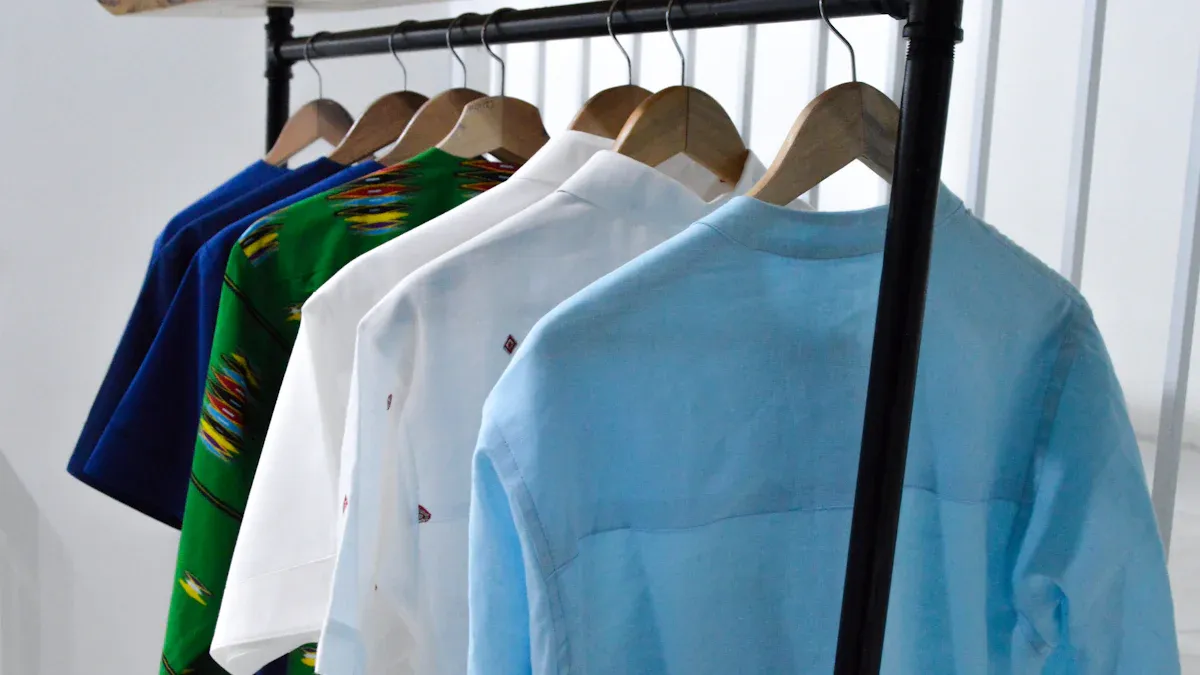
Best Polo Shirts for Men: Fit and Features
Stores that want to sell the best men’s polo shirts should focus on fit. Surveys show men like polos that are close to the body but not tight. This fit lets the shirt hang nicely and does not stick to the skin. Men often wear polos without anything under them, so comfort is very important. The best polos use soft knits that let air in and feel good all day.
A good polo has arm seams that line up with the shoulders. The shirt should be as long as a T-shirt and end just below the belt. This keeps the shirt neat, whether tucked in or not. Men want polos that look sharp but do not stop them from moving. The collar should stand up and keep its shape after washing.
Some top features of the best men’s polos are:
Sleeves that end in the middle of the upper arm for a modern style.
A button placket with strong stitching.
Knit fabric that does not wrinkle and keeps its shape.
Stretchy fabric that moves with you.
Small logos for a clean look.
The best dress polos for men use high-quality cotton piqué or jersey. These fabrics look classic and feel soft. Experts say men should pick polos with small logos and simple lines. These polos work with jeans, chinos, or under a blazer for a smart-casual outfit.
Here is a table that shows the best fit and features for men’s polos:
Feature | Description |
|---|---|
Fit Profile | Trim, tailored, not tight |
Shoulder Seams | Align with shoulder edge |
Sleeve Length | Ends mid-bicep |
Shirt Length | Hits just below the belt |
Collar | Classic, structured, holds shape |
Fabric | Soft, breathable, wrinkle-resistant |
Design | Minimal branding, classic placket |
Tip: A polo that fits well helps men feel good and look confident anywhere.
Women’s Knit Polo Shirts: Tailored Details
Women’s knit polos have changed with new fashion trends. Designers now add details that fit the body and make the shirt useful. Simple and practical styles are popular. Classic collars and button plackets are still important for a timeless look. Short-sleeved polos in white or neutral colors are favorites. These colors are easy to match with jeans, skirts, or dress pants.
Trends show women want polos that are both comfy and stylish. Polos with big logos are popular, especially with sporty or work-inspired outfits. Fancy touches like ombré colors, special stripes, and business-like details make polos look more special. Simple lines and few colors help women go from casual to dressy looks easily.
Some key details for women’s knit polos are:
A fitted waist and shaped sides for a nice shape.
Classic collar and button placket for many outfit choices.
Soft knit fabric that stretches and lets air in.
Sleeves that fit well and make arms look good.
Modern touches like ombré or soft stripes.
Women often wear polos with pleated skirts for a school look or with cargo pants for a sporty style. The best dress polos for women also work with a skirt suit for work. Styles from pop culture and sports have made polos a favorite for many women.
Note: A polo that fits well gives women comfort and confidence. It is a must-have for work, fun, and everything else.
Merchandising Knit Polo Shirts
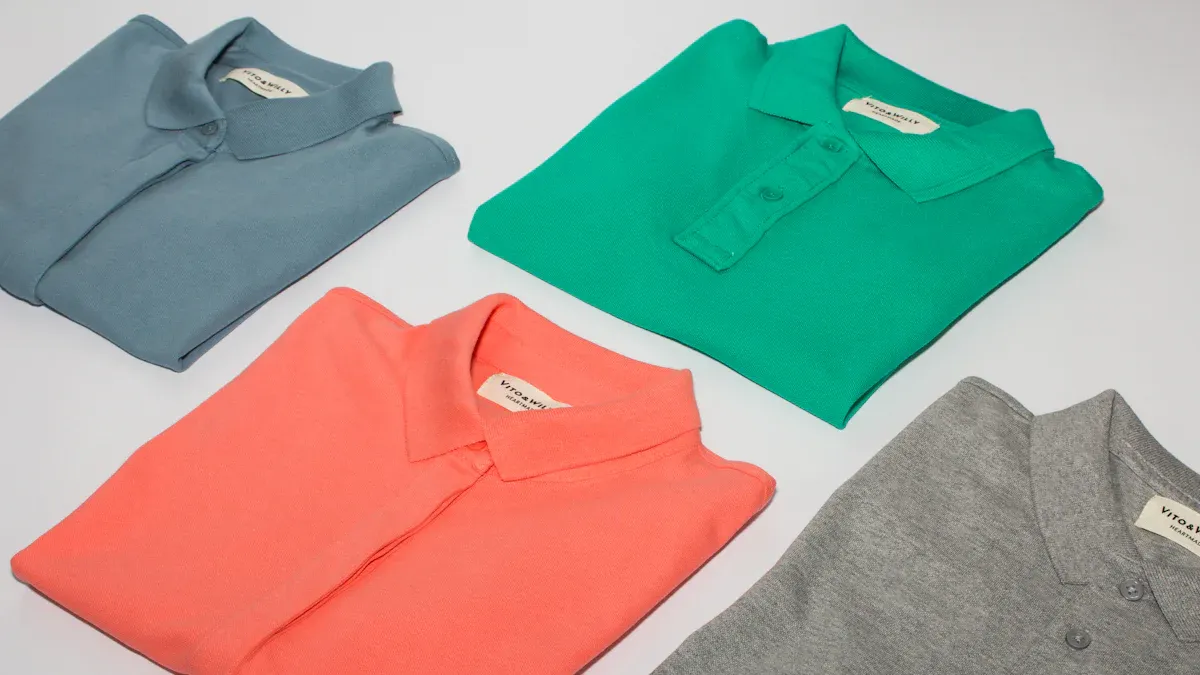
In-Store Display Ideas
Stores can sell more polos with neat displays. Wide aisles and bright lights help people see all the shirts. Polos stacked in piles, like at Uniqlo, show many choices. Mannequins wear polos with pants or skirts to give outfit ideas. Signs near the polos tell about new shirts or sales. This makes people notice and want to buy. Screens can show why each polo is good, like if it keeps you dry or is eco-friendly. This helps shoppers pick the best one. Window displays use polos in fun colors for each season. This brings people into the store and shows the store’s style.
Online stores should make it easy to find polos. Good categories and collections help shoppers look for what they want. Smart tools suggest polos based on what people look at. This helps sell more shirts. Reviews and clear pictures help shoppers trust the store and pick the right polo.
Cross-Selling and Upselling
Stores can get people to buy more by pairing polos with other clothes. Staff can help shoppers find a jacket, hoodie, or hat to go with a polo. Here is a table with ideas for bundles:
Item | Why It Works with Polos |
|---|---|
Hats | Adds style and completes the outfit |
Jackets | Layers well for changing weather |
Hoodies | Offers comfort for casual occasions |
Socks | Useful for gift bundles |
Stores can also sell polos as part of special groups, like business or sport. Polos with names or designs make nice gifts when sold with other items. Sales for holidays, like Father’s Day, get people to buy more things. Online, smart tools and deals suggest matching items. This makes it easy for shoppers to add more to their cart.
Tip: Selling polos with jackets or hats helps customers make a full outfit and helps stores sell more.
Expanding Collections with Minimal SKUs
Unisex and Gender-Specific Options
Stores can add more knit polo shirts without making too many new SKUs. They do this by picking smart designs. Unisex polos are good for people who want to show their own style. Many women now pick polos that feel good and help them feel strong. Men like polos that help them look different from others. More people want clothes that anyone can wear. Unisex knit polos have shapes and styles that work for everyone. These shirts use soft polyester knits, so both men and women feel comfy in them.
But only having unisex polos can be hard for some shoppers. Some people want shirts made just for men or just for women. Men might want polos with bigger shoulders and longer bodies. Women may want polos with a smaller waist and shorter sleeves. Stores can help by selling both unisex and gender-specific polos. This way, everyone can find a shirt that fits well and feels right.
To make more choices without too many SKUs, stores can change things like:
Knit patterns: pique, jersey, ribbed, waffle
Collar shapes: classic, Johnny, banded necks
Placket designs and sleeve trims
Logo placements and branding elements
Fabric blends: cotton, cotton-polyester, viscose
Fabric weights: 220gsm to 300gsm
Size ranges: youth XS to adult 5XL
Stores can use flexible production and OEM/ODM services. This lets them order small amounts and try new styles without having too many extras.
Seasonal Colors and Updates
Adding new colors for each season keeps people interested in knit polos. Every season, brands bring out colors like olive green, navy blue, apricot crush, orange, and burgundy. These new colors make shopping fun and help stores keep up with trends. Picking the right colors is important because shoppers want polos that match their clothes or work needs.
Stores use both new colors and classic ones to please everyone. Simple patterns and small graphics make polos easy to wear anywhere. For example, the TREK TIDE POLO uses layers of seasonal colors to look cool and stand out, but it still looks relaxed. This makes people want to come back and see what’s new.
Tip: Change up colors and patterns often so customers stay excited and want to buy more.
Branding and Customization
Logo Embroidery and Corporate Use
Many companies pick knit polo shirts for their teams. These shirts make everyone look neat and together. Putting a logo on polos helps a business get noticed at events. When workers wear polos with the company logo, they help show off the brand. This makes people remember the company and trust it more. Studies say people remember brands that give out shirts. Many think embroidered shirts look professional.
Brands like Core 365™, Hanes® EcoSmart®, and Nike® Dri-FIT™ have polos you can add logos to. These shirts use special fabrics that do not wrinkle, keep you dry, and block the sun. Companies put logos on the chest, sleeves, or back to look professional. Keeping logos in the same spot on every shirt helps people know the brand.
Teams in matching polos at events get noticed more and look strong. This helps workers feel proud and makes customers trust them.
Now, companies use eco-friendly materials and cool colors for polos. Some even add names to shirts. These things let workers show who they are but still match the brand. Many companies pick small logos or soft prints for a classy look.
Building Brand Value with Quality
Quality is very important for a strong brand. Stores that use great fabrics and skilled work make polos that last. People notice when shirts use silk-cotton blends or good cotton piqué. These polos keep their shape, color, and comfort after many washes.
Good polos make people want to buy again and stay loyal.
Higher prices are okay because the shirts last and feel special.
Brands that control their stores can show off their polos better, making them seem worth more.
Ralph Lauren uses custom fabrics and works with top mills to show quality matters. When people get a nice polo, they remember the brand and want to come back. Good quality, fit, and details help stores build trust and keep customers coming back.
Brand Success Stories
Leading Brands in Knit Polo Shirts
Many top brands are known for their knit polo shirts. They succeed by mixing old ideas with new ones and making smart choices.
Ralph Lauren is a leader. The Polo line uses classic looks and good fabrics. The brand keeps a high-end image and tries new things first. Ralph Lauren made the PoloTech™ shirt, which tracks fitness.
Lacoste made the polo shirt popular with its crocodile logo. The brand cares about comfort and a style that never gets old.
Tommy Hilfiger and Hugo Boss are liked by younger people. They use modern fits and bright colors. These brands work with others and follow trends to stay cool.
Fred Perry, Gant, and Brooks Brothers mix old styles with new ones. They focus on quality and fit, so people keep coming back.
Some brands, like Burberry and Kent & Curwen, sell in places like China and Brazil. They use things like logo embroidery to make people loyal and reach more buyers.
Brands that sell both men’s and women’s polos grow faster. Styles for everyone help them get more customers.
Lessons for Retailers
Retailers can learn a lot from these top brands. Ralph Lauren’s made-to-order polos show how custom shirts can help sales and cut waste. Shoppers pick colors and add initials or logos, so each shirt is special. This way, stores do not have too many extra shirts and can deliver faster.
Have a special selling point that shows style and luxury.
Use great quality and skilled work to stand out.
Let shoppers customize shirts to get them excited and avoid extra stock.
Try fun marketing like pop-up shops and social media to get attention.
Add new products slowly and keep the brand’s main values.
Set clear rules for custom shirts to protect the brand.
Retailers who do these things can sell more knit polo shirts and keep customers coming back.
Retailers who sell knit polo shirts can reach many people. Professionals and families both like these shirts. Polo shirts are comfy and work for many events. They look nice and can be worn in different ways. Good fabrics and a nice fit make customers happy. This helps people want to buy again. Showing polos with other clothes helps stores sell more. To get more sales, stores should pick brands people trust. They should let customers add names or logos. Stores need to have sizes for everyone. Good service is also important for happy shoppers.
Polo shirts are still a favorite for uniforms, casual days, and teams. They help stores get more customers and grow their business.
FAQ
What makes knit polo shirts different from regular polos?
Knit polo shirts are made with a special knitting method. This makes them stretchier and softer than regular polos. They usually last longer and look neater than sewn polos.
How should retailers choose the right size range for knit polos?
Retailers should check what sizes customers buy most. Offering sizes from XS to 5XL fits almost everyone. Unisex polos help, but men’s and women’s fits are more comfy for each group.
Are knit polo shirts suitable for uniforms and corporate branding?
Yes, knit polos are great for uniforms. They look nice and feel good to wear. Companies can put logos on them with embroidery or printing. This helps teams match and shows off the brand.
How can stores keep knit polo shirts looking new?
Stores should read and follow the care label. Wash polos in cold water and let them air dry. Use gentle soap to keep the fabric safe and colors bright.
What are the best ways to display knit polo shirts in-store?
Stores can use mannequins, folded shirts, and color groups. Signs and screens can show off features like moisture-wicking or eco-friendly fabric. These displays help get shoppers’ attention and sell more polos.



